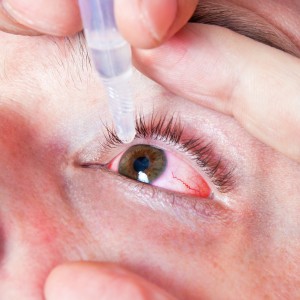 Ocular Therapeutix, Inc. recently announced topline results of their second of two Phase 3 trials evaluating the efficacy and safety of their candidate drug OTX-DP, a compound that releases Sustained Dexamethasone, at a dose of 0.4mg, to treat pain and ocular inflammation after cataract surgery. The company also reported more information from its first Phase 3 trial.
Ocular Therapeutix, Inc. recently announced topline results of their second of two Phase 3 trials evaluating the efficacy and safety of their candidate drug OTX-DP, a compound that releases Sustained Dexamethasone, at a dose of 0.4mg, to treat pain and ocular inflammation after cataract surgery. The company also reported more information from its first Phase 3 trial.
The Phase 3 trials for OTX-DP efficacy endpoints showed significant differences in the treatment group compared to placebo for the nonexistence of pain on day 8 and nonexistence of inflammatory cells on day 14. For the trials to be considered effective, both endpoints had to be met, however, the second trial only met one of the two efficacy endpoints.
In one of the trials, 77.5% of the patients who received OTX-DP had absence of pain on day 8 after insertion of the compound, compared to 58.8% of patients who received the placebo. Results also revealed that 39.4% of the patients treated with OTX-DP had an absence of inflammatory cells in the anterior chamber on day 14 after insertion of the compound when compared with 31.3% of subjects who received the placebo.
Last month, the company reported their first Phase 3 trials results, where a total of 247 patients were enrolled. The results showed that OTX-DP met both primary efficacy endpoints. In this trial, the compound was found to reduce inflammatory cells on day 14 and pain on day 8. A total of 33.7% of patients who received OTX-DP were absent of inflammatory cells in the anterior chamber on day 14 after insertion of the compound in comparison to 14.6% of those patients who received the placebo. Results also revealed that a total of 76.1% of patients who received OTX-DP had absence of pain on day 8 after insertion of the compound in comparison to 36.1% of patients who received the placebo.
In terms of safety, results from the two OTX-DP Phase 3 clinical trials showed no serious adverse toxic side effects. In terms of secondary efficacy outcomes, the first Phase 3 trial revealed differences in pain absence at days 2, 4, 14 and 30 in the group of patients that was treated with OTX-DP compared to patients in the placebo group. There were also differences in the absence of inflammatory cells at day 30 between patients treated with OTX-DP in those who received placebo. The company is still evaluating secondary efficacy outcomes for its second Phase 3 trial.
“Following the favorable results from our first Phase 3 trial, we are disappointed that the second Phase 3 clinical results for resolution of inflammation did not have the same magnitude of differential as what OTX-DP achieved in the first trial,” said Amar Sawhney, Ph.D., President and CEO in a news release. “Although the efficacy results for the absence of inflammatory cells in the OTX-DP treatment group met our expectations, the placebo group response was significantly higher than expected. We have begun a thorough analysis of the data from the second Phase 3 trial to fully understand the difference in efficacy between these two trials that had essentially the same trial design and similar patient populations. We have examined the aggregate result on a post-hoc basis of the absence and very minimal presence of inflammatory cells (defined as 0 and 0.5 on a scale of 0 to 4.0) and the difference between the treatment and placebo groups was found to be highly significant (66.3% in the treatment group and 42.5% in the placebo group, p=0.0004),” he added.
Dr. Sawhney continued in the news release, “We plan to meet with the FDA promptly to discuss the Phase 3 OTX-DP clinical trial results and chart the appropriate path forward. The safety data from these two trials further enhances the safety profile of this product and will serve as a foundation for the regulatory submissions for other indications with this product. We look forward to advancing our OTX-DP and OTX-TP clinical development programs to the next stage.”
OTX-DP is placed in the canaliculus and delivers dexamethasone to the ocular surface for about four weeks. After treatment, OTX-DP resorbs and exits the nasolacrimal system. Ocular Therapeutix announced last November data on its Phase 2 trial that assessed the efficacy and safety of the drug in patients with allergic conjunctivitis. The company is also planning to start Phase 3 trials for this condition by mid-2015.
Currently, Ocular Therapeutix is recruiting patients for a Phase 2b trial of its second sustained release product candidate, OTX-TP (Sustained Release Travoprost) to treat ocular hypertension and glaucoma. The efficacy results are expected in the fourth quarter of 2015.


